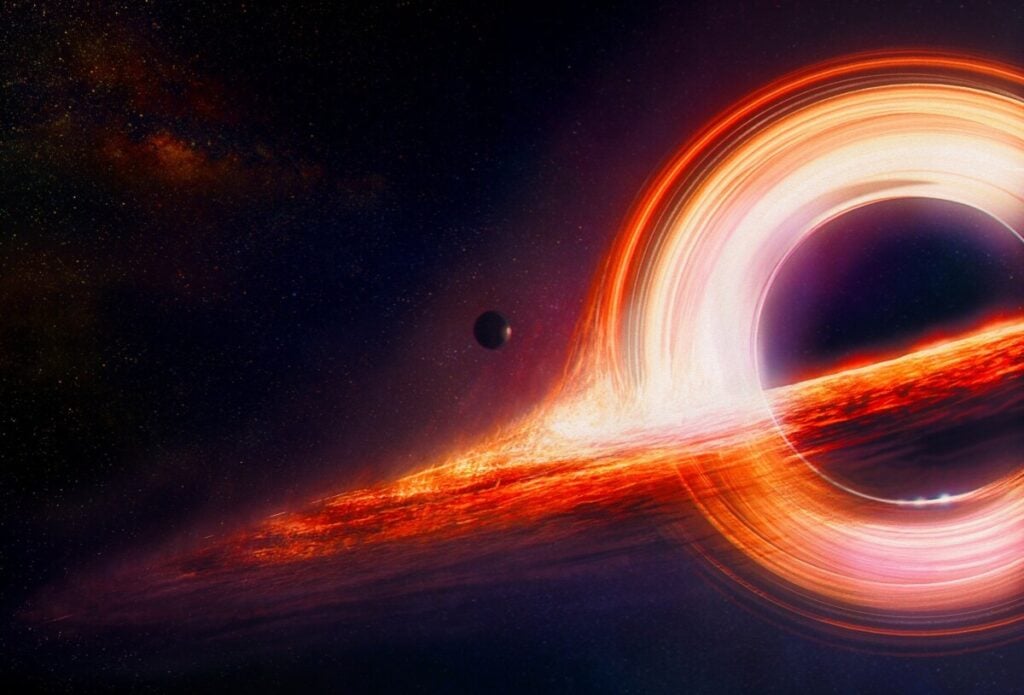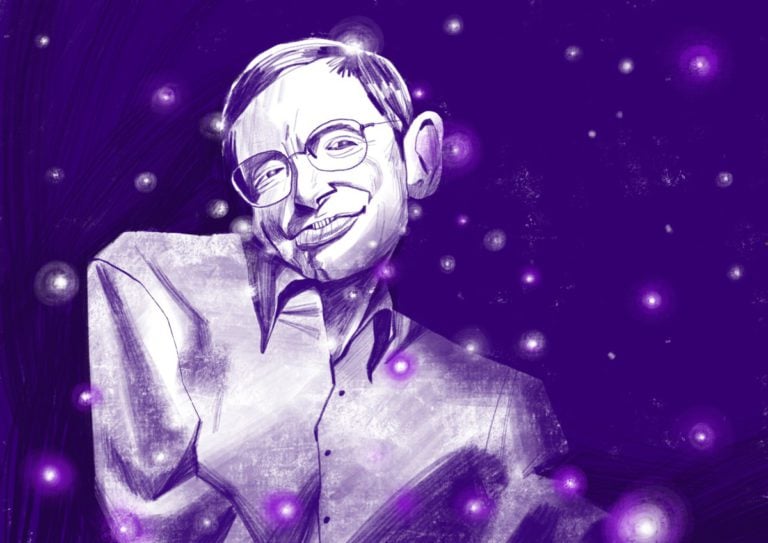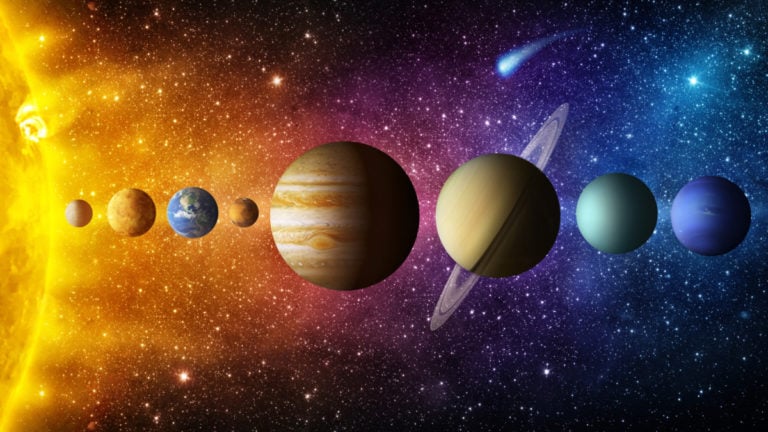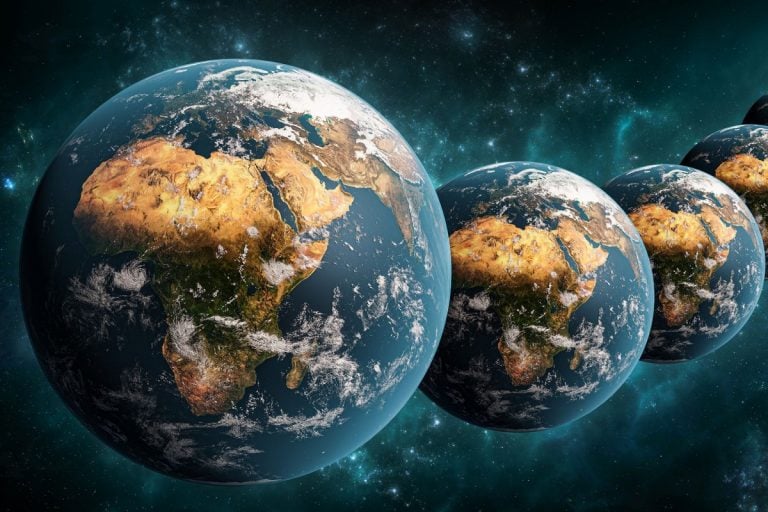Black hole is the most mysterious and unusual phenomenon in the Universe. In the depths of its space are hidden many secrets, which humanity is not yet able to understand.
- What is a “black hole”?
- Why did the “black hole” get such a name?
- What configuration does a black hole have?
- What is the structural structure of a black hole?
- What types of black holes are there?
- How many black holes are there in the Galaxy?
- What is the largest black hole?
- For what purpose are black holes studied and how many of them have been discovered?
- What can happen when you fall into a black hole?
- Do black holes collide with each other?
- Is there a threat of destruction of the Universe when black holes awaken?
The physical properties of these space objects are considered incomprehensible and strange. From a scientific point of view, they have always aroused great interest among astronomers and physicists around the world.
Thanks to the latest technologies, today it is possible not only to develop a wide variety of scientific theories suggesting the structure of a black hole, but also to successfully apply them in practice.
Astrophysicists were recently able to obtain the first image of this unique space-time formation.
What is a “black hole”?
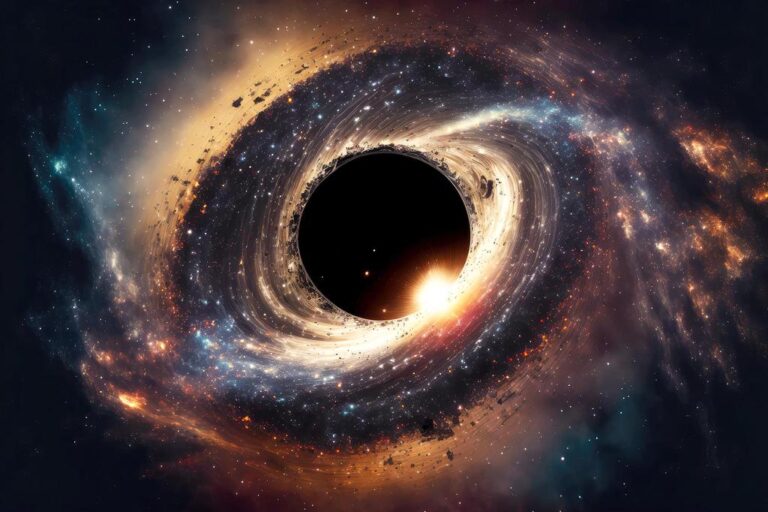
Despite such a mysterious name, black holes, in terms of their characteristics and structural composition, are among the simplest cosmic objects in the Universe. They have only two fundamental parameters – specific mass and rotational speed.
In astrophysical science there is a hypothesis that this phenomenon is the final process of the evolutionary transformation of a star. At the last life stage of the celestial body, an explosion occurs, as a result of which a black hole appears in its central part. Astrophysicists called the new cosmic formation obtained in this way “the event horizon.”
It is worth knowing that this object does not have a physical shell. Only a part of space, located at a certain distance from the central zone, in which there is no influence of gravitational forces, serves as it.
When any cosmic objects or light enter the event horizon, they will never be able to escape from the black hole due to the influence of a strong gravitational field on them.
Why did the “black hole” get such a name?
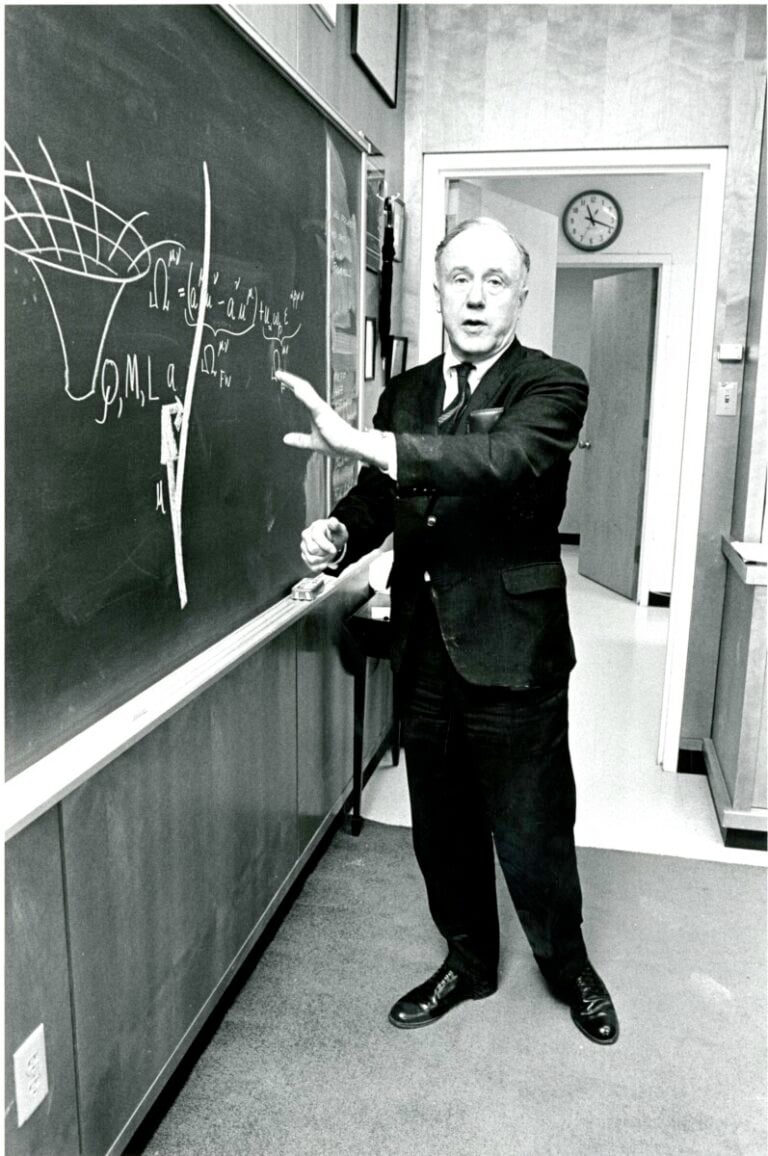
This space-time phenomenon is called that way because it is capable of completely absorbing light waves. Therefore, it cannot be seen at a visual level.
A black hole can be seen only under one condition, when near the event horizon there is a shell of a special substance, for example, gas.
This object can still be clearly seen as it absorbs matter and energy from a nearby star.
There are no other methods for detecting a black hole, since it cannot be seen using any instruments.
However, despite the ability of black holes to completely absorb light energy without reflecting it in any way, scientists suggest that these space objects still have the property of emitting light.
During the period of their existence, they are capable of sending certain particles of the simplest type into outer space. Most of them are photonic electromagnetic waves.
In its physical aspect, this phenomenon can be considered as gradual evaporation. However, its existence is considered only a theoretical unconfirmed hypothesis, which in scientific circles is called “Hawking radiation“.
Black holes can only be noticed when they come into contact with each other, since this process is accompanied by the emission of visible light waves of gravity.
The formation of these cosmic phenomena primarily depends on their specific mass. On this basis, black holes are divided into several groups: massive – their mass is millions of times greater than the solar system and circumsolar – with a weight slightly greater than the mass of the Sun.
The dimensions of the space of a black hole are directly proportional to the value of its specific mass. The higher the weight indicator of this object, the larger the event horizon width parameter.
Based on experimental studies, astrophysicists have proven the theoretical hypothesis that black holes of the circumsolar category are quite old and were presumably formed at the stages of the origin of the Universe.
They most likely formed due to the process of compression of stars with parameters greater than the size of the solar system by about 50 times. As soon as the stage of star reduction was completed, it exploded, forming a black hole in the central zone.
Black holes belonging to the massive variety are usually produced by huge clouds of gas. They have a mass quite sufficient to form gigantic black holes and a large weight, exceeding the mass of the solar system by millions of times.
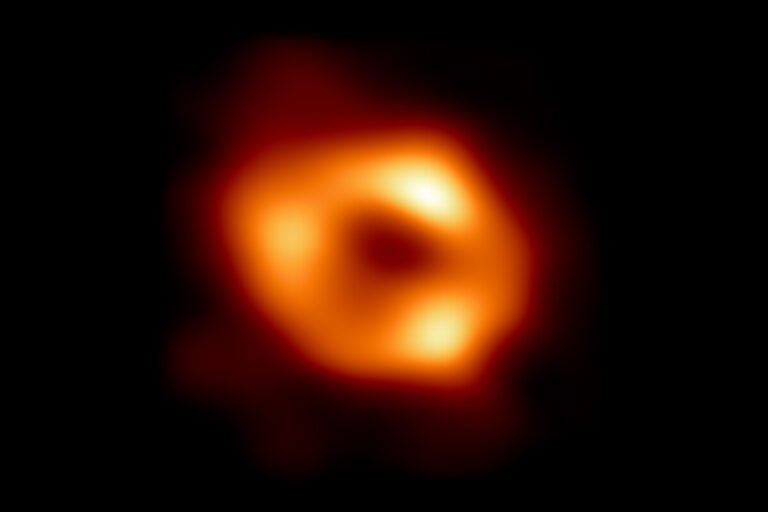
The key material for the formation of this black hole was a cloud of gas, compressed to a minimum size. There is also a hypothesis with the opinion that this celestial phenomenon in the Milky Way was formed due to the explosion of a star of enormous size.
The Sagittarius A black hole and the Milky Way constantly attract various objects or matter from Space as they pass through the boundaries of the event horizon. Due to this, the dimensions of the black hole gradually become larger.
What configuration does a black hole have?
Every black hole that exists in outer space can rotate around its axis. At the same time, the shape and appearance of these objects largely depends on the speed limit.
If a black hole rotates slowly, it will have a spherical configuration. If it rotates at the highest possible speed, then in this case its pole flattens and it takes on an oval shape. Today there is no technology to be able to determine the exact configuration of these space objects.
Astrophysicists around the world are making many attempts to identify what is located inside the space of black holes. But no one has been able to find out this until now.
It is well known that the laws of physics cannot operate in the central part of a black hole. The fact of the curvature of outer space tending to infinity has also been proven.
Currently, the most well-reasoned hypothesis is the location of a singularity in the middle of a black hole.
What is the structural structure of a black hole?
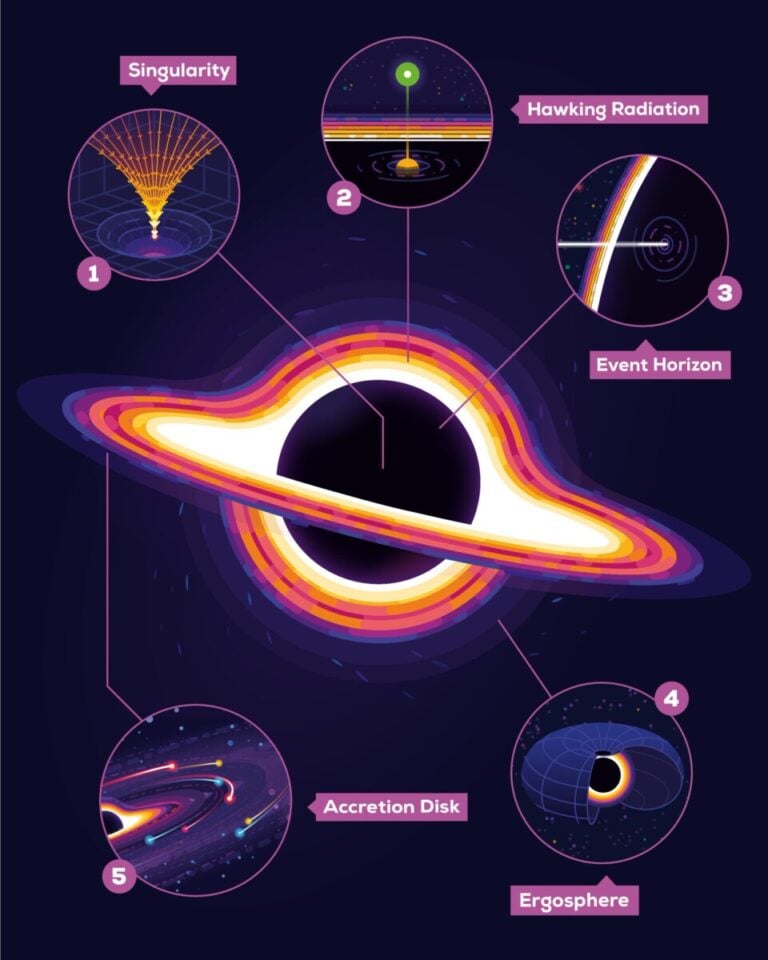
The Event horizon is a special boundary, upon crossing which any object will be in the gravitational field.
Singularity is a special internal filling of a black hole. Scientists have still not been able to determine what it consists of. The only thing that was found out was the presence of a distortion of space and time inside it, as well as the absence of the operation of physical laws.
When a black hole rotates, an ergosphere forms in the zone near the event horizon. The space objects inside move in the same direction as it.
In this case, an insignificant force of attraction is observed. But it is insufficient for the possibility of drawing these matters into the region of singularity. For this reason, surrounding objects freely leave the space of the ergosphere.
The higher the black hole’s weight, the lower its density. This factor is explained by the fact that as the weight of this object increases, the volume of its space correspondingly increases.
What types of black holes are there?
During space exploration, astronauts were able to identify several types of black holes. Each of them has its own characteristic features and properties.
Stellar-mass black holes
This type of black hole is formed due to the burning of fuel energy in stars. If thermonuclear processes stop inside these celestial bodies, they cool and contract due to powerful gravity.
When this process is stopped at any stage, black holes transform into neutron stars. With continuous such actions, stars are transformed into black holes through gravitational forces.
Supermassive black holes
These black holes are distinguished by their enormous mass and large-scale dimensions. Moreover, their parameters were previously assumed to be much smaller.
For example, according to the first version, the mass of the black hole M87, located in the central galactic part, was 3 billion solar system masses. However, upon closer examination, it was discovered that this figure is much higher.
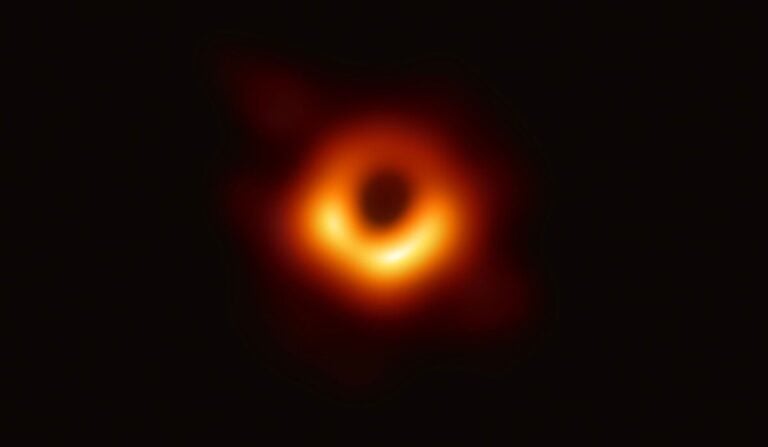
To be able to rotate stellar bodies in the vastness of space, a black hole must have a specific mass of 6.5 billion solar system masses.
Scientists were able to find out that huge black holes are mainly located in the central zone of the Galaxy and serve as its core.
Primordial black holes
The presence of these cosmic objects in the space of the Universe is an unproven fact today. There is a version that such varieties of black holes were formed at the stage of the birth of the Galaxy in superdense matter of gravitational fields, with their strong vibration and due to a violation of homogeneity.
If we assume the real existence of primordial black holes, then they most likely have insignificant weight, which is less than the mass of the Sun.
Quantum black holes
These space objects could only be formed due to nuclear reactions, accompanied by the release of a huge amount of energy, approximately more than 10^26 eV. But today humanity has not yet been able to overcome this figure. For this reason, quantum black holes exist only in the theoretical version of scientists.
There is a hypothesis that these phenomena can be formed during the collision of proton elements, as a result of which a large amount of energy will be released and a maximon will be formed, consisting of particles of the simplest type.
When during this process a high level of pEe release is observed, due to it an object called a “black hole” will be formed with a radius of approximately 10^-35 m and a weight of 10^-5 g. Maximon belongs to the category of elementary particles with the most maximum mass.
How many black holes are there in the Galaxy?
The process of detecting black holes is very complex. It involves long-term observation of the Galaxy and Space in order to collect as much information and data as possible.
In addition, a significant number of black holes remain undetected until they begin to absorb matter located in the surrounding space.
In the area of the Milky Way, it was possible to record the presence of about 10 of these objects. They are constantly monitored. But in the vastness of this galactic space there may be a huge number of black holes of completely different sizes – from small to super-large.
There are approximately 400 million stars inside the Milky Way, which have a large mass to transform into black holes.
In 2005, astronauts discovered a heterogeneous body slowly moving around the central part of the Galaxy. Data obtained from such studies indicate the presence of at least 20,000 black holes in this zone of the Milky Way.
Recently, scientists from Japan discovered a strange space object located near the black hole “Sagittarius A”, with a specific gravity of 100,000 solar masses and a diameter of 0.3 light-year periods. This celestial body may also turn out to be a black hole.
What is the largest black hole?
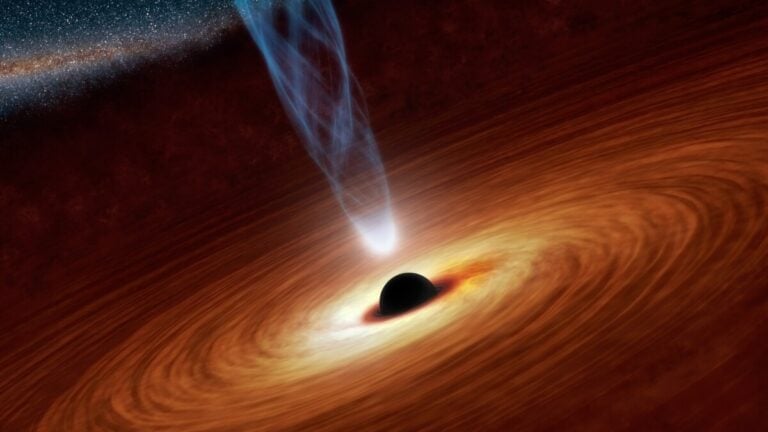
This celestial body is located at a distance of 12 billion light years from the Sun. Its mass is equal to 40 billion solar masses, and its diameter is about 0.025 light years. The age of this black hole is about 12 billion years, which means its formation 1.5 billion years after the formation of the Galaxy.
Having studied this object in detail, scientists concluded that its potential resource is quite sufficient until the era of black holes completely disappears. In addition, it may be the last such phenomenon in outer space.
In this case, one of the stages in the development of the Galaxy is assumed, during which a scenario of extinction of almost all the stars of the Universe and the transformation of many of them into black holes can occur.
For what purpose are black holes studied and how many of them have been discovered?
Astronomers around the world study black holes to determine many important characteristics of the Universe. Such celestial bodies often serve as galactic nuclei. In addition, these objects are used to rotate them.
When black holes collide with each other, certain gravitational waves are generated.
The internal space of these objects is also of great interest to scientists, since they do not completely obey generally accepted physical laws. The study of black holes helps to determine the fundamental features of the structure of outer space.
Currently, scientists have been able to discover and study in detail up to 20 celestial objects with similar properties.
However, the data obtained is not entirely sufficient to provide as evidentiary arguments to categorize them as black holes.
What can happen when you fall into a black hole?
When a person supposedly finds himself inside a black hole, he, like any objects, will be subject to the influence of a powerful gravitational field.
In such a space, objects begin to flatten and stretch until they are divided into atoms and merged with a singularity.
In many science fiction books and films, black holes are used as special time portals. But in reality, through them it is impossible to get into another dimension or spatial zone.
Do black holes collide with each other?
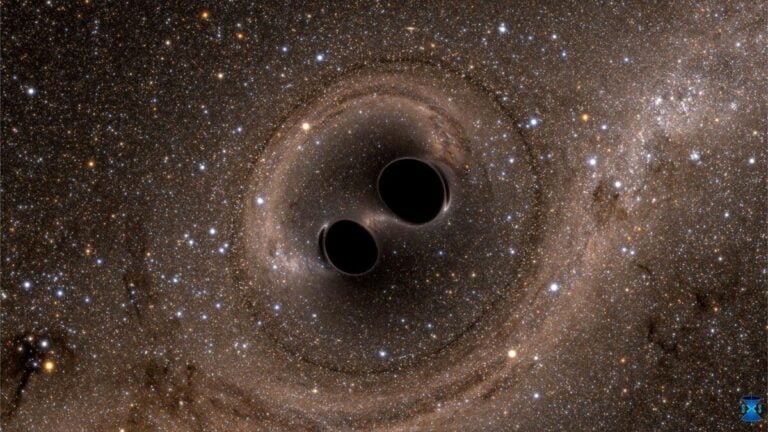
If two stars located at a small distance from each other transform into black holes, then in this case they can actually collide when approaching.
This phenomenon can also occur due to the merger of galaxies. During this process, both black holes, consisting of a large number of stars, have a high probability of being close to each other and subsequently colliding.
However, this factor is observed not so often – approximately once every two billion years.
When black holes collide, a gradual stage of their merging occurs, lasting for about twenty years, during which the black holes turn into one. Mixing and singularities also occur within them.
In principle, through the collision of these celestial bodies in space, one black hole of enormous dimensions is formed.
Is there a threat of destruction of the Universe when black holes awaken?
The main feature of black holes is the absence of any manifestations. It is well known that such objects can be noticed only by signs of their absorption of cosmic substances, which, when disappearing in their depths, begin to emit powerful light waves. Due to this light, it is possible to detect black holes at the stage of their absorption of various celestial matters.
“Sleeping” black holes are detected only by finding companion stars near them. This classic method for detecting such invisible objects has been used for decades.
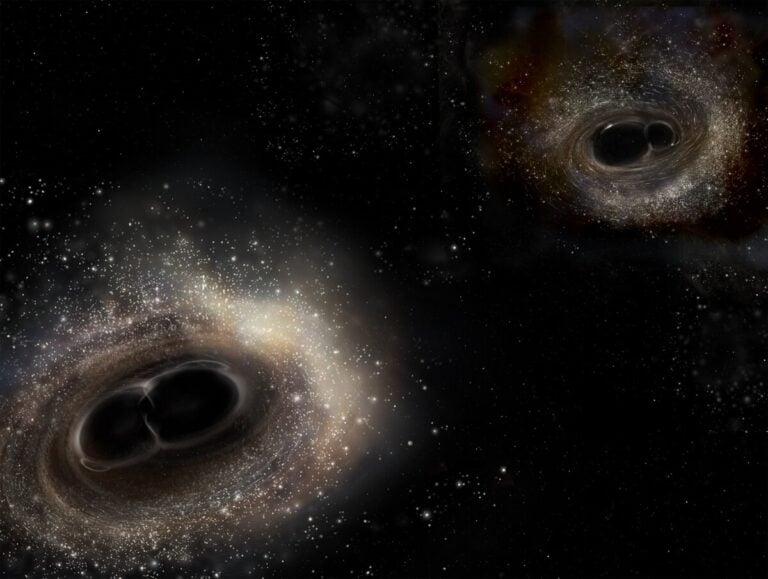
Just recently, astronomers using the Gaia space telescope spotted two black holes near the solar system. One of them was located at a distance of 3800 light years from the Sun, and the other was 1560 light years away.
The telescope was able to record their certain swaying, which occurred due to nearby inconspicuous black holes.
Both discovered black holes are quite large, approximately 10 times larger than the solar system. They are very close to the Earth. These are terribly huge space objects. Many people wonder: do they pose a danger to the Universe?
Experts answer this question in the affirmative. The main characteristic feature of a black hole is the ability to suck into itself all objects that cannot resist its gravitational forces of attraction. Any matter that falls into a black hole disappears in its space forever.
Thus, we can conclude that black holes, of course, are dangerous for the Universe, regardless of their size – giant or small.
